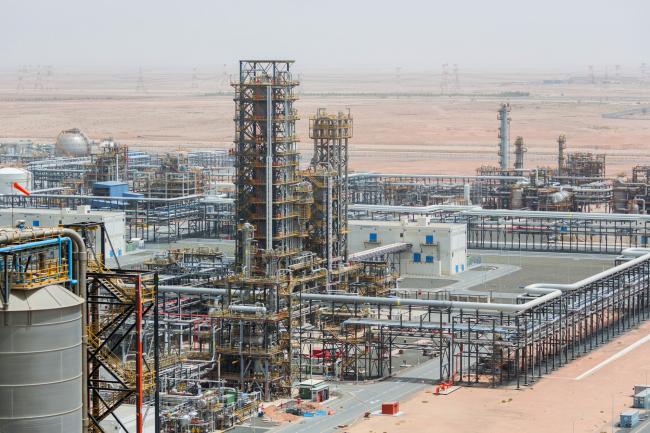 © Bloomberg. Cracking towers stand at the Ruwais refinery and petrochemical complex, operated by Abu Dhabi National Oil Co. (ADNOC), in Al Ruwais, United Arab Emirates, on Monday, May 14, 2018. Photographer: Christophe Viseux/Bloomberg
© Bloomberg. Cracking towers stand at the Ruwais refinery and petrochemical complex, operated by Abu Dhabi National Oil Co. (ADNOC), in Al Ruwais, United Arab Emirates, on Monday, May 14, 2018. Photographer: Christophe Viseux/Bloomberg(Bloomberg) — OPEC emphasized the deep uncertainty over the strength of demand for its oil just a week before contentious talks on whether to raise production.
There’s a “wide forecast range” for how much crude the Organization of Petroleum Exporting Countries needs to pump in the second half of the year, its research department said in a monthly report. With a range of of 1.7 million barrels a day between the upper and lower estimates, demand could either be significantly higher, or slightly below, than OPEC’s current output.
“Looking at various sources, considerable uncertainty as to world oil demand and non-OPEC supply prevails,” according to the report, published by OPEC’s secretariat in Vienna. “This outlook for the second half of 2018 warrants close monitoring.”
OPEC and its allies are headed for a fractious meeting in Vienna next week as Saudi Arabia, under pressure from President Donald Trump, seeks to revive halted output to prevent higher prices. While Russia also favors an increase, there’s growing resistance from countries that have little scope to raise production, including Iraq, Iran and Venezuela. Tuesday’s report could give ammunition those nations, putting them on a collision course with other members who seem determined to pump more.
Glut Gone
The Saudis and Russia have been leading a 24-nation coalition of oil producers, drawn from OPEC and beyond, since early 2017. Their supply cuts have already cleared a global glut, with oil inventories falling below their five-year average for the first time since 2014, according to the report.
Under the current terms of the supply deal, production curbs are set to continue until the end of 2018. The cartel’s main forecast, mostly unchanged from last month’s report, indicates that more OPEC crude would be needed to fully satisfy global demand. However, the group also gave unusual emphasis to the uncertainty in this estimate.
An average of 33.34 million barrels a day is required from the group’s 14 members in the second half of 2018, considerably higher than the 31.87 million they pumped last month, the report showed. Output from Venezuela continues to slump amid an economic crisis, slipping to 1.39 million barrels a day in May.
Growing Risks
Yet the report also said that “downside risks might limit” the demand outlook as economic growth slows in major economies, fuel subsidies are withdrawn and consumers switch from oil to . It also highlighted the potential for even faster output growth from rival producers including the U.S., Canada and Brazil.
OPEC uses the top end of the forecast range for its base-case estimate, the report showed. If demand for its crude turns out to be at the lower end, OPEC’s current output would already be slightly higher than the market requires.
Despite the uncertainties, Saudi Arabia and Russia appear to already be in the process of increasing production, unwinding almost 18 months of supply restraint.
Saudi Arabia told the organization it had raised output above 10 million barrels a day last month for the first time since October, the report showed. Russia boosted crude supply to the highest in 14 months in the first week of June as some companies breached their caps, said a person with knowledge of the matter.
(Updates with inventories in fifth paragraph.)
Source: Investing.com




























